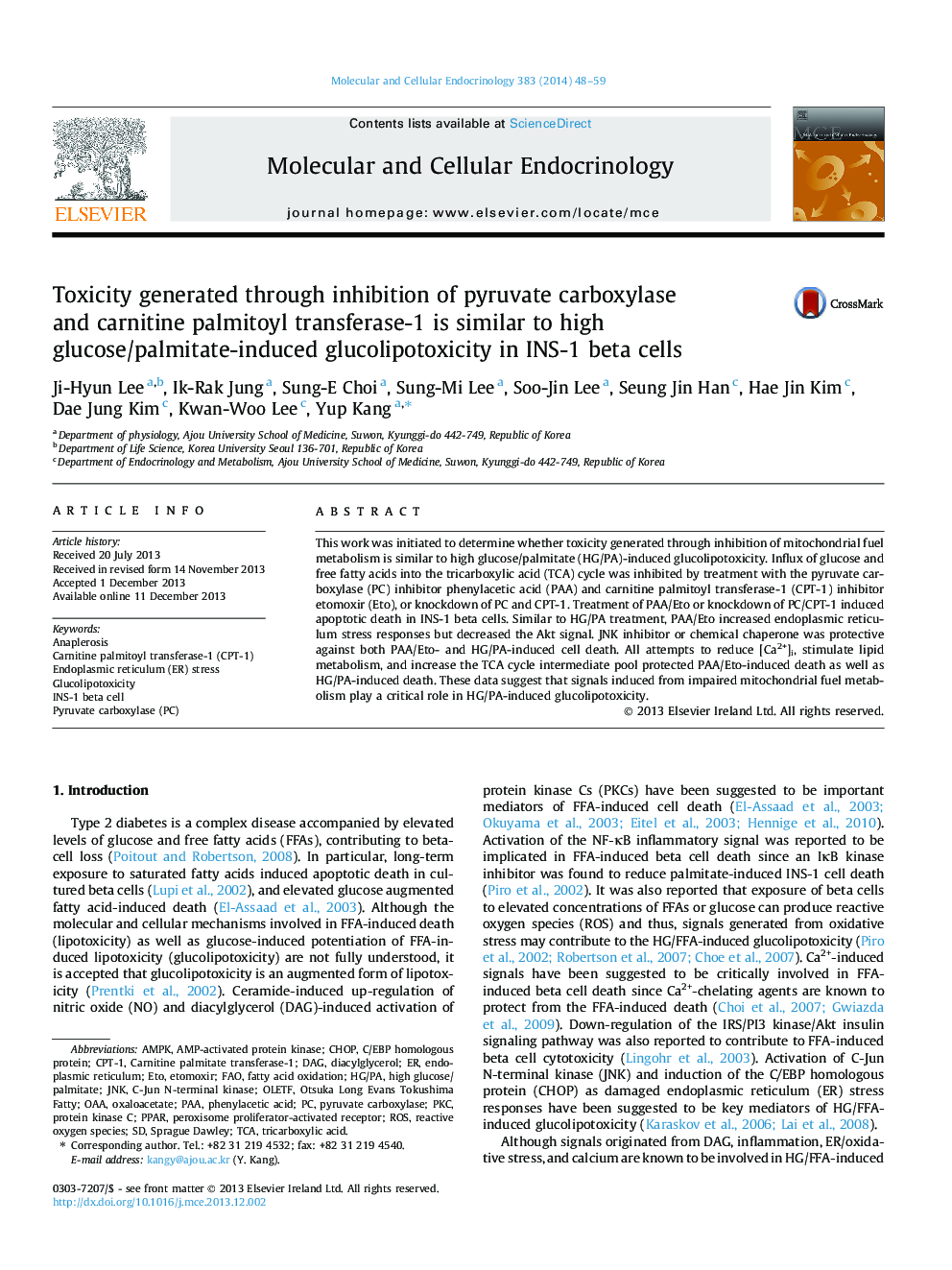| Article ID | Journal | Published Year | Pages | File Type |
|---|---|---|---|---|
| 8477238 | Molecular and Cellular Endocrinology | 2014 | 12 Pages |
Abstract
This work was initiated to determine whether toxicity generated through inhibition of mitochondrial fuel metabolism is similar to high glucose/palmitate (HG/PA)-induced glucolipotoxicity. Influx of glucose and free fatty acids into the tricarboxylic acid (TCA) cycle was inhibited by treatment with the pyruvate carboxylase (PC) inhibitor phenylacetic acid (PAA) and carnitine palmitoyl transferase-1 (CPT-1) inhibitor etomoxir (Eto), or knockdown of PC and CPT-1. Treatment of PAA/Eto or knockdown of PC/CPT-1 induced apoptotic death in INS-1 beta cells. Similar to HG/PA treatment, PAA/Eto increased endoplasmic reticulum stress responses but decreased the Akt signal. JNK inhibitor or chemical chaperone was protective against both PAA/Eto- and HG/PA-induced cell death. All attempts to reduce [Ca2+]i, stimulate lipid metabolism, and increase the TCA cycle intermediate pool protected PAA/Eto-induced death as well as HG/PA-induced death. These data suggest that signals induced from impaired mitochondrial fuel metabolism play a critical role in HG/PA-induced glucolipotoxicity.
Keywords
OxaloacetatePPARPKCOLETFTCACPT-1AnaplerosisOAAPAAEToetomoxirJnkAMPKAMP-activated protein kinaseC/EBP homologous proteinc-Jun N-terminal kinaseROSEndoplasmic reticulum (ER) stressSprague Dawleytricarboxylic acidPhenylacetic acidFatty acid oxidationCHOPdiacylglycerolDAGGlucolipotoxicityendoplasmic reticulumFAOProtein kinase Cpyruvate carboxylaseReactive oxygen speciesperoxisome proliferator-activated receptor
Related Topics
Life Sciences
Biochemistry, Genetics and Molecular Biology
Cell Biology
Authors
Ji-Hyun Lee, Ik-Rak Jung, Sung-E Choi, Sung-Mi Lee, Soo-Jin Lee, Seung Jin Han, Hae Jin Kim, Dae Jung Kim, Kwan-Woo Lee, Yup Kang,
